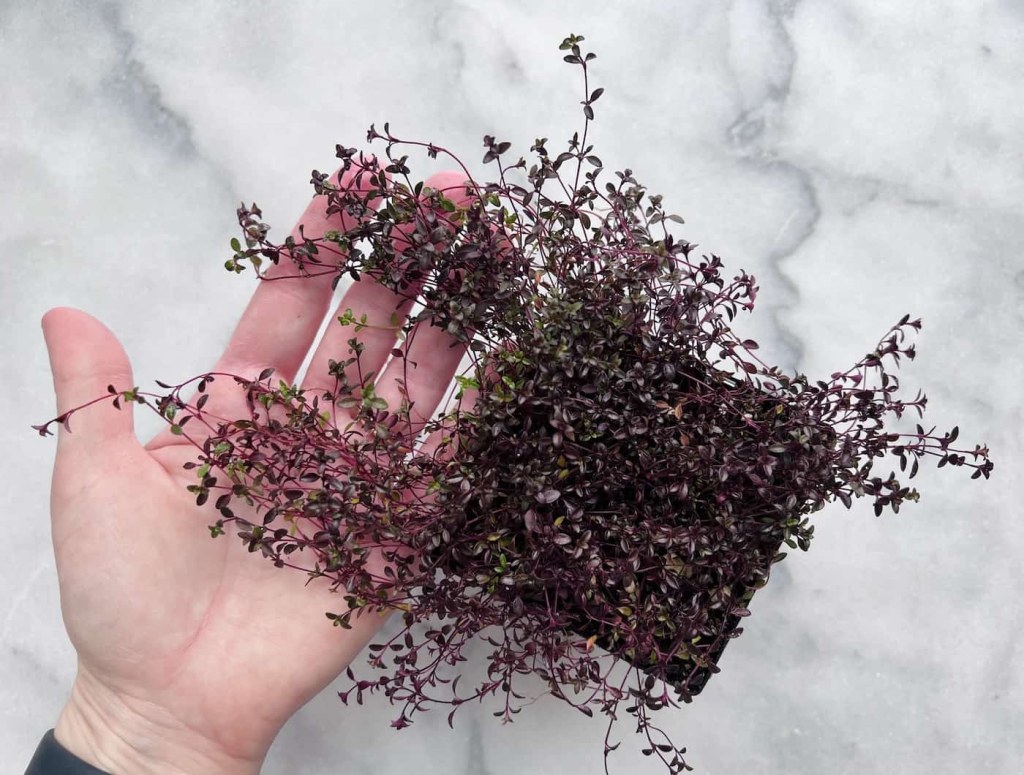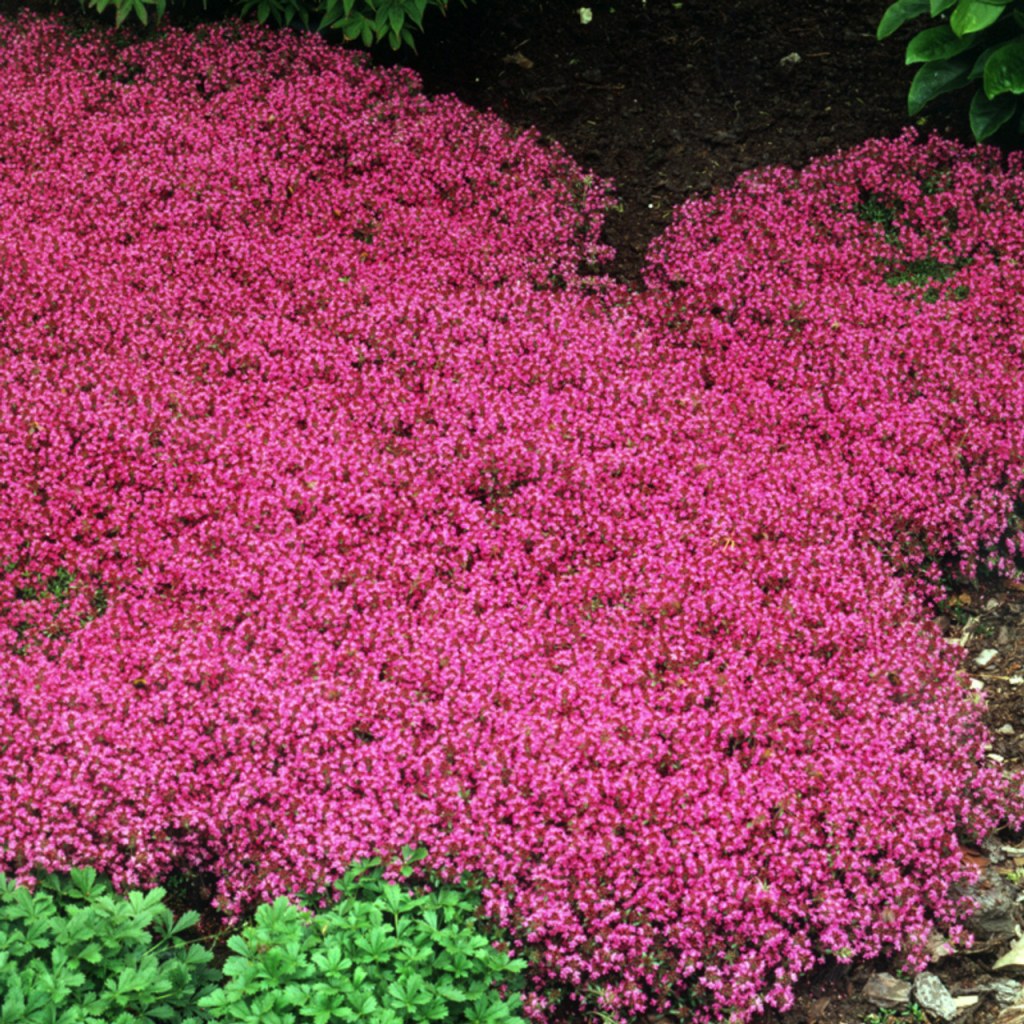Protect Your Pets With Red Creeping Thyme: A Safe And Stunning Solution!
Is Red Creeping Thyme Safe for Pets?
Greetings, Pets Lovers! As pet owners, the safety and well-being of our furry friends are always a top priority. With that in mind, it is essential to be knowledgeable about the plants and herbs that we have around our homes, as some may pose potential risks to our pets. In this article, we will discuss red creeping thyme and its safety for pets, specifically cats and dogs.
Introduction
Red creeping thyme, also known as Thymus serpyllum ‘Coccineus’, is a low-growing perennial herb that is often used for ground cover due to its vibrant red flowers and strong fragrance. This herb has gained popularity not only for its aesthetic appeal but also for its potential health benefits and versatility in various culinary dishes.
3 Picture Gallery: Protect Your Pets With Red Creeping Thyme: A Safe And Stunning Solution!



However, as pet owners, it is crucial to consider whether red creeping thyme is safe to have around our beloved pets. In this article, we will delve into the topic and provide you with all the necessary information to ensure the safety of your furry companions.
Table: Red Creeping Thyme Safe for Pets
Category
Information

Image Source: homefortheharvest.com
Scientific Name
Thymus serpyllum ‘Coccineus’
Pet-Friendly
Yes*
Common Names
Red Creeping Thyme, Wild Thyme, Mother-of-Thyme
Toxicity Level
Non-toxic to cats and dogs

Image Source: homefortheharvest.com
Appearance
Low-growing perennial herb with small, rounded leaves and vibrant red flowers
Growing Conditions
Full sun, well-drained soil
* Although red creeping thyme is generally considered safe for pets, individual sensitivities and allergies may vary. As always, it is recommended to monitor your pet’s behavior and consult a veterinarian if any unusual symptoms occur.
What is Red Creeping Thyme?
Red creeping thyme, scientifically known as Thymus serpyllum ‘Coccineus’, is a low-growing perennial herb in the Lamiaceae family. It is native to Europe and parts of Asia and is widely cultivated for its ornamental and culinary uses. This herb features small, rounded leaves and produces clusters of vibrant red flowers, making it a popular choice for ground cover in gardens and landscapes.

Image Source: bigcommerce.com
Aside from its visual appeal, red creeping thyme also possesses a delightful fragrance, which adds to its overall charm. Its aromatic leaves and flowers make it a favored herb in the culinary world, where it is used to enhance the flavors of various dishes, including meats, soups, stews, and sauces.
Who Should Consider Red Creeping Thyme for Their Pets?
If you are a pet owner who enjoys gardening and wants to incorporate pet-safe plants into your landscape, red creeping thyme may be an excellent choice for you. This herb not only adds beauty and color to your outdoor space but also offers a safe and pet-friendly environment for your furry companions.
Red creeping thyme is particularly suitable for pet owners who have cats and dogs that enjoy spending time outdoors. Its low-growing nature and dense foliage provide a comfortable lounging area for your pets while adding a touch of natural beauty to your garden.
When Can Red Creeping Thyme be Introduced to Pets?
Red creeping thyme can be introduced to pets at any age, as it is non-toxic and generally safe for cats and dogs. However, if you have a curious puppy or kitten, it is advisable to monitor their behavior closely when introducing them to new plants or herbs. Some young pets may be more prone to chewing or digging, which could potentially damage the plants.
It is essential to note that while red creeping thyme is safe for pets, there may be other plants or herbs in your garden that could pose risks. Always ensure that your outdoor space is free from toxic or harmful plants, and provide a designated area for your pets to play and explore safely.
Where to Find Red Creeping Thyme?
Red creeping thyme is widely available in plant nurseries, garden centers, and online stores that specialize in herbs and perennials. It can be purchased as potted plants or as seeds for those who prefer to grow them from scratch.
If you are unsure about the availability in your local area, a quick search online can provide you with a list of nurseries or stores that offer red creeping thyme. Additionally, you can consult with gardening enthusiasts or join gardening communities to inquire about reliable sources for obtaining this herb.
Why is Red Creeping Thyme Safe for Pets?
Red creeping thyme is considered safe for pets, including cats and dogs, due to its non-toxic nature. Unlike some other plants or herbs that may cause adverse reactions or toxicity when ingested, red creeping thyme does not pose significant risks to the health of your furry friends.
However, it is essential to remember that individual sensitivities and allergies may vary. While red creeping thyme is generally safe, some pets may still have adverse reactions if they come into contact with the herb. As a responsible pet owner, it is crucial to monitor your pets and seek veterinary advice if any unusual symptoms occur.
How to Safely Introduce Red Creeping Thyme to Pets?
Introducing red creeping thyme to your pets can be done safely by following a few simple guidelines:
1. Monitor your pets: Observe your pets’ behavior around the herb to ensure they do not show signs of excessive curiosity or attempt to chew or dig the plants.
2. Provide alternative distractions: Offer plenty of toys, treats, or other activities to keep your pets engaged and divert their attention from the herb.
3. Utilize barriers: If necessary, use physical barriers such as fences, gates, or plant enclosures to prevent direct access to the herb until your pets become familiar with the boundaries.
4. Train your pets: Basic obedience training can help reinforce boundaries and discourage undesirable behaviors around the herb.
5. Consult a veterinarian: If you have any concerns about your pets’ interaction with red creeping thyme or notice any unusual symptoms, consult a veterinarian for professional advice.
Pros and Cons of Red Creeping Thyme for Pets
Advantages of Red Creeping Thyme for Pets
1. Non-toxic: Red creeping thyme is non-toxic to cats and dogs, providing peace of mind for pet owners.
2. Ground cover: The low-growing nature of red creeping thyme makes it an excellent ground cover option, creating a natural and visually appealing environment for pets.
3. Aromatic properties: The fragrance of red creeping thyme can have calming effects and provide sensory stimulation for pets.
4. Culinary uses: Red creeping thyme can be used in pet-friendly recipes, adding flavor and nutritional benefits to their meals.
5. Attracts beneficial insects: The flowers of red creeping thyme attract pollinators and beneficial insects, contributing to a healthy ecosystem in your garden.
Disadvantages of Red Creeping Thyme for Pets
1. Potential allergies: Although rare, some pets may have allergies or sensitivities to red creeping thyme, resulting in mild skin irritation or digestive discomfort.
2. Choking hazard: The small size of red creeping thyme leaves could potentially pose a choking hazard if ingested in large quantities. Monitor your pets to ensure they do not consume excessive amounts.
3. Overconsumption risks: While red creeping thyme is generally safe, consuming large quantities may lead to digestive upset in some pets. Moderate their intake to prevent any issues.
Frequently Asked Questions (FAQs)
1. Can red creeping thyme be harmful to my pets if they ingest it?
No, red creeping thyme is non-toxic to cats and dogs. However, individual sensitivities may vary, so it is always recommended to monitor your pets’ behavior and seek veterinary advice if any unusual symptoms occur.
2. Can red creeping thyme cause allergies in pets?
While red creeping thyme is generally safe, some pets may have allergies or sensitivities to the herb. If you notice any signs of skin irritation or digestive discomfort, it is advisable to consult with a veterinarian.
3. How can I incorporate red creeping thyme into my pet’s diet?
You can incorporate red creeping thyme into your pet’s diet by adding small amounts of fresh or dried leaves to their meals. However, it is essential to ensure that the herb is thoroughly washed and free from any pesticides or chemicals that may be harmful to pets.
4. Can red creeping thyme be used as a natural flea repellent for pets?
While red creeping thyme has aromatic properties that may help repel fleas, it is not considered a highly effective or long-lasting solution. It is best to consult with a veterinarian for appropriate flea control methods for your pets.
5. Are there any alternative pet-safe herbs that I can consider?
Yes, there are several pet-safe herbs that you can consider, such as catnip, parsley, basil, and rosemary. However, it is always recommended to research each herb and ensure they are safe for your specific pet species before introducing them into their environment or diet.
Conclusion
In conclusion, red creeping thyme is generally safe for pets, including cats and dogs. Its non-toxic nature, aromatic properties, and visual appeal make it an excellent choice for pet owners who want to create a pet-friendly outdoor environment. However, it is essential to consider individual sensitivities and allergies, as well as monitor your pets’ behavior when introducing any new plants or herbs. By following the guidelines provided and seeking veterinary advice when necessary, you can ensure the well-being and safety of your beloved pets.
Final Remarks
It is crucial to note that while this article provides general information about red creeping thyme’s safety for pets, each pet is unique, and their reactions may vary. If you have any concerns or notice any unusual symptoms in your pets, it is always best to consult with a veterinarian for professional advice. Additionally, it is recommended to research and confirm the pet-friendly nature of any plants or herbs before introducing them into your pets’ environment or diet. By prioritizing the safety and well-being of our pets, we can create a harmonious and enjoyable living space for both humans and animals.
This post topic: Pets



